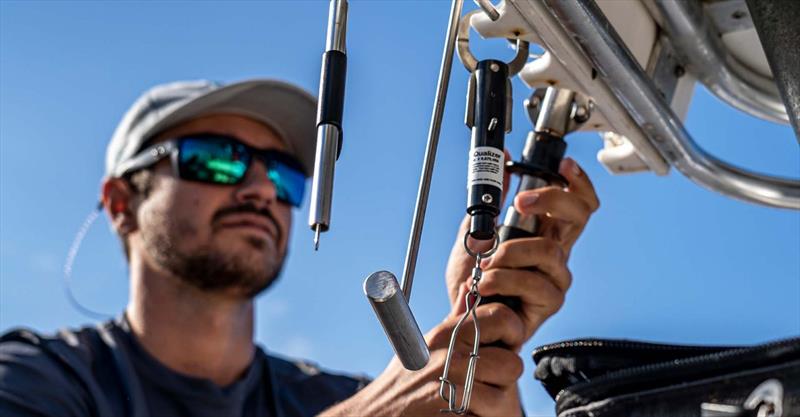
Releasing fish safely
by Grady-White 28 Jun 2022 18:05 UTC

Prepare for trip © returnemright.org
Proper catch and release is just one of many contributions we can make to marine conservation.
If you catch a fish that is out of season, endangered, under the legal size limit, or if you're just fishing for sport, here are some tips to help you safely release it back into the water.
Prepare for trip
- Have a plan:
- What species are you targeting?
- What depths are you fishing?
- How do you plan on catching the fish?
- The season, size, and bag limits for the species you're targeting.
- Incorporate releasing fish into your routine fishing plan - plan ahead for how you will release fish.
- What to bring?
- All necessary gear to release fish (dehooking devices, venting tools, descending devices, and enough weight to descend the fish you are targeting).
- Gear that prevents further injury to fish, including heavy enough tackle, proper hooks and bait for your targeted catch.
- On the water:
- Know what to do before a fish gets to the surface in order to effectively release it.
Minimize fight time and hook injury
- Why it matters?
- The longer a fish fights, the more lactic acid builds up in a fish, which can lead to death.
- Lighter gear will lengthen fight time and increase predation encounters leading to unnecessary death of fish.
- Light gear is likely to lead to more breakoffs and excessive gear left either in a fish or in the ocean.
- What to do?
- Use heavy enough rod, reel and terminal tackle to quickly get fish to the surface.
- Use non-stainless steel, non-offset circle hooks to prevent gut hooking fish.
- Cut the line if a fish is gut hooked; trying to pull the hook out will lead to further injury. Non-stainless steel hooks will rust or fall out over time.
Minimize air exposure and handling time
- Why it matters?
- Fish use a lot of energy and oxygen during the fight, which needs to be replenished in order to fully recover.
- Fish are unable to breathe out of the water and need oxygenated water running over their gills in order to breathe.
- What to do?
- Only hold a fish out of water for as long as you can hold your breath.
- If a fish is not showing signs of barotrauma, use a dehooking device to quickly release the fish over the water.
- If you plan to take a picture, have a camera ready prior to pulling the fish out of the water.
- If a fish is gut hooked, cut the line and get the fish back in the water quickly.
Presence of predators
- Why it matters?
- Although it is often unavoidable, predators such as sharks, dolphins, barracuda, goliath groupers and others may take your catch from your line.
- Interactions with predators lead to fewer fish available both to anglers and in the ecosystem to grow and spawn.
- Predators may interact with fish being descended leading to a loss of gear.
- Predators consuming hooked fish results in frustration when angling.
- What to do?
- Move or rotate spots frequently. Although predators are quick to appear to boats, it is often possible to get a few good fish in the boat before they arrive.
- Use heavy tackle to reel fish up quickly before predators get to them.
- If you are worried about losing gear while descending fish, try rigging your descending device and weight with steel leader.
Photography and handling
- Why it matters?
- Fish are often injured if improperly handled.
- Improper handling can cause you to drop the fish, leading to physical injury/harm.
- Fish have a protective coat of slime over their scales. Removing this slime makes fish more susceptible to disease.
- What to do?
- If you plan on releasing fish and want a picture, have a designated camera ready before you pull the fish out of the water.
- Hold the fish horizontally to support the body weight of the fish.
- Try to avoid putting your hands in the gills of the fish.
- Use wet gloves or a wet rag to improve grip, minimize slime loss and avoid injury to hands.